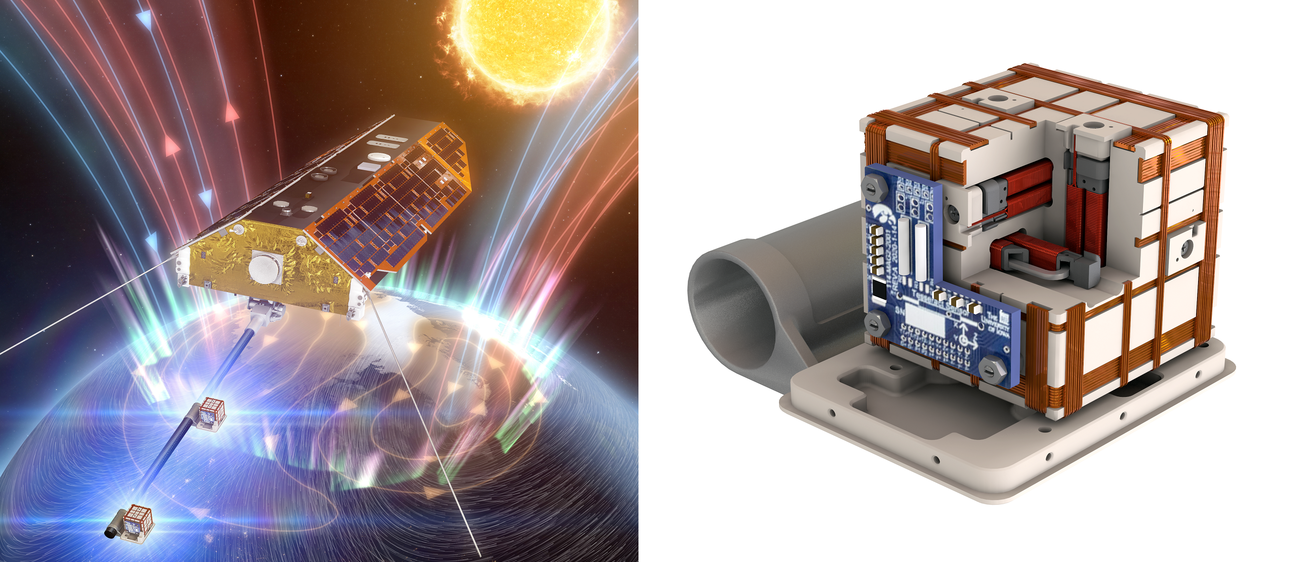NASA has selected three investigation teams to join the agency’s Geospace Dynamics Constellation (GDC) mission science team in studying Earth’s upper atmosphere, as well as five additional investigations, including one from the University of Iowa, that will be under consideration for inclusion in the mission.
In an announcement on April 26, NASA said the MAGnetometers to Advance GDC (MAG) investigation, led by UI Assistant Professor David Miles, will receive $250,000 to conduct an approximately four-month study. At the end of this period, NASA will select up to two investigations to join the GDC mission.
GDC is a coordinated group of satellites that will provide the first direct global measurements of the dynamic and complex region of space enveloping Earth – known as the ionosphere and thermosphere (I-T) region. The constellation’s ability to simultaneously study processes operating across a range of temporal and spatial scales will provide an unprecedented level of understanding of this region. GDC will fundamentally advance scientists’ understanding of this interface to Earth’s space environment much like early weather satellites did for global weather systems.
“GDC will greatly increase our understanding of and ability to mitigate the effects of space weather,” said Thomas Zurbuchen, associate administrator for science at NASA Headquarters in Washington. “What we learn from GDC about I-T is both critical for missions in low-Earth orbit, and a critical ingredient for understanding orbital debris in that domain.”
Planned for launch no earlier than September 2027, GDC will orbit in the same altitude range as the International Space Station, approximately 215 to 250 miles above Earth. This region is where Earth’s I-T system strongly responds to energy inputs from the Sun and space environment above, and from the lower atmosphere below – and where it internally redistributes this energy throughout near-Earth space. The processes and dynamics active in this region can lead to many of the space weather effects we experience on Earth, such as disrupted communications and navigation signals, satellite orbit disruptions, and certain triggered power outages. GDC will provide the scientific foundation necessary to understand space weather processes, leading to the ability to better prepare for and mitigate its effects.
Banner image caption: The Iowa MAG instrument will enable the GDC mission to study the currents and waves that underpin space weather
